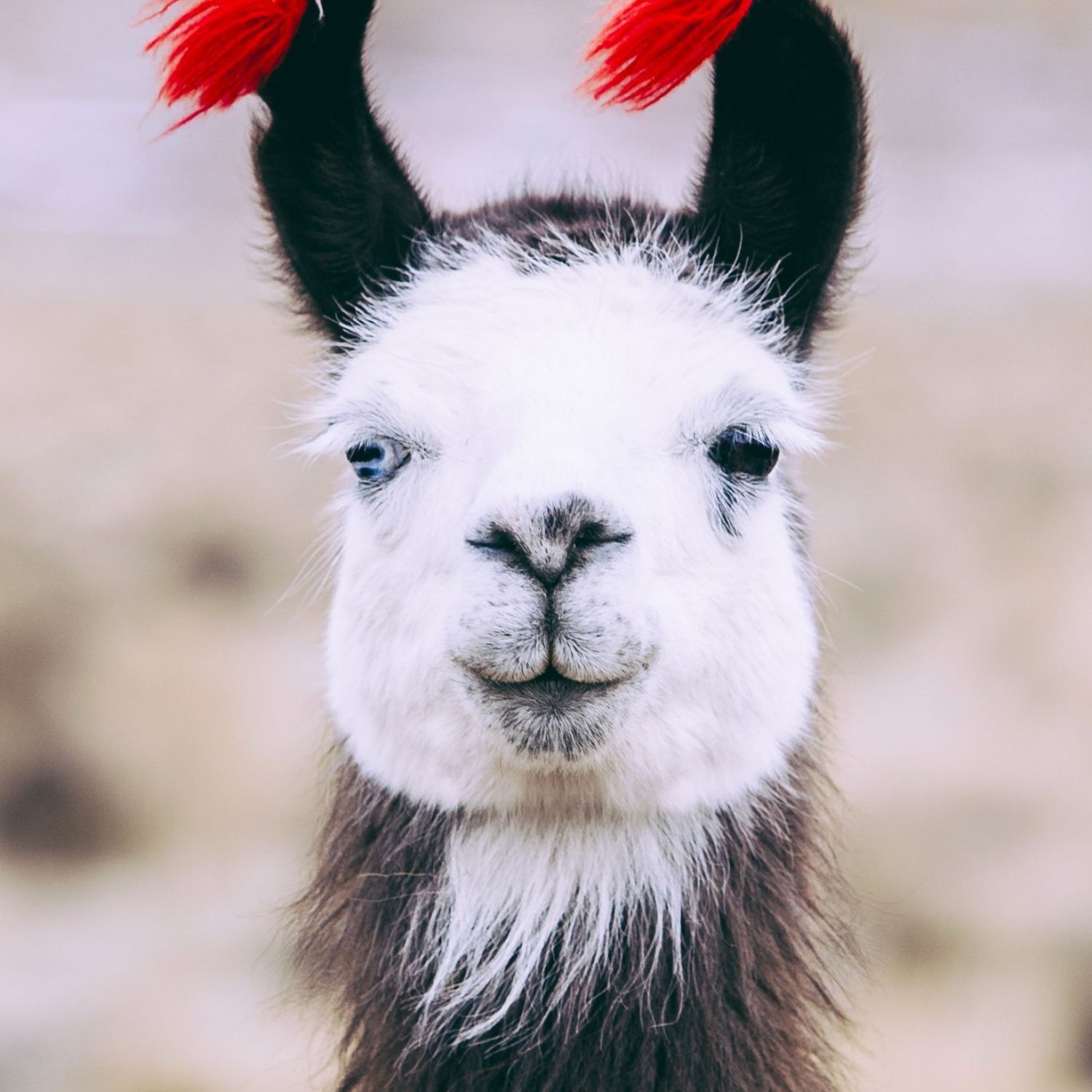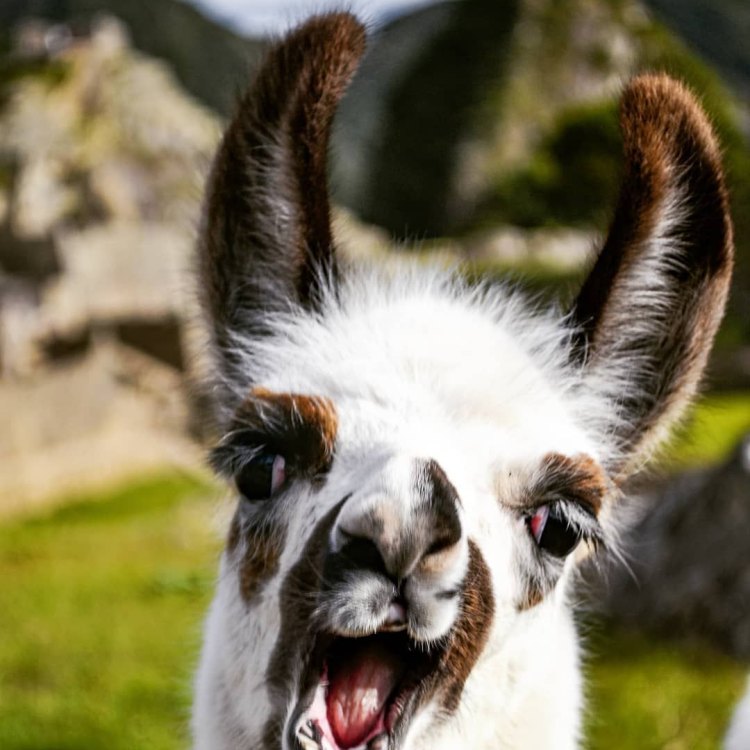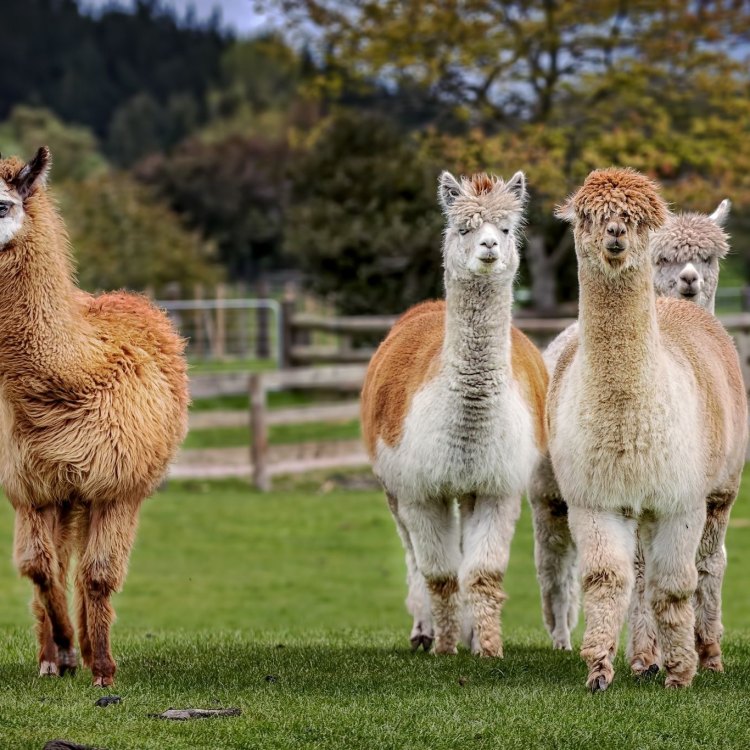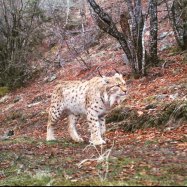
Llama
4 to 6 feet
The Llama, a member of the Camelidae family, is a tall and slender animal with long legs and a long neck. These majestic creatures can grow up to 6 feet in length and can be found in the Andes Mountains. With their soft and woolly coats, llamas are a popular sight in the Andean region, serving as pack animals and providing wool for clothing. Explore the breathtaking landscape of the Andes and spot these fascinating animals!
Animal Details Summary:
Common Name: Llama
Kingdom: Animalia
Habitat: Mountainous regions
Llama: The Graceful and Endearing Camelids of the Andes
In the breathtaking landscapes of the Andes Mountains of South America, one can often spot a group of tall, slender animals with long necks and legs, grazing peacefully in the mountainous region. These animals, known as llamas, are an integral part of the Andean culture and have been domesticated for centuries by the native people. With their distinctive looks and endearing nature, llamas have captured the hearts of many and have become a popular choice as pets and working animals. In this article, we'll dive deeper into the world of llamas, exploring their scientific background, habitat, behavior, and more Llama.Llamas, scientifically known as Lama glama, belong to the family Camelidae, which includes other animals such as camels, alpacas, and guanacos. They are members of the Kingdom Animalia, Phylum Chordata, and Class Mammalia. One of the most intriguing features of this animal is their unique body shape – tall and slender with long legs and a long neck. Llamas can range in length from 4 to 6 feet and weigh between 280-450 pounds, with males being larger than females.
Native to the mountainous regions of South America, llamas have been domesticated for thousands of years, primarily for their meat, wool, and as pack animals. They are commonly found in countries like Peru, Bolivia, Argentina, and Chile, but have also been introduced to other parts of the world, including the United States and Canada. Due to centuries of domestication, llamas have adapted well to the high altitudes and cold weather conditions of the Andes Mountains.
One of the most striking features of llamas is their unique colorations, which vary from shades of brown, white, and black. Their thick, woolly coat serves as protection against the harsh, cold winds of the Andes Largemouth Bass. Llamas also have sharp, padded feet, designed to navigate the rough and rocky terrain of their habitat. Their long necks and flexible lips enable them to reach vegetation in hard-to-reach areas, making them excellent foragers.
Apart from their physical attributes, llamas are also fascinating creatures due to their social behavior. As herd animals, llamas live in groups and have a strong social structure. They are highly communicative animals and use various methods such as humming, head tossing, and spitting to communicate with one another. This spitting, often misunderstood as a sign of aggression, is actually a defense mechanism used to establish boundaries and assert dominance within the herd.
Being herbivores, llamas have a strict plant-based diet, consisting mainly of grasses, leaves, and shrubs. Their digestive systems are well-adapted to efficiently break down fibrous plants, enabling them to extract essential nutrients from their food. Due to their high altitude habitat, llamas have a slower metabolic rate, allowing them to conserve energy and survive on limited food supplies.
Despite being domesticated for centuries, llamas retain many of their wild instincts and behaviors. They are highly alert animals, constantly on the lookout for potential predators. When threatened, llamas can spit, kick, and even deliver powerful bites to fend off attackers. However, with proper care and training, llamas can be gentle and friendly animals, making them popular as pets and even therapy animals.
In their natural habitat, llamas are a vital part of the ecosystem, and their grazing habits play a significant role in maintaining the balance of the delicate Andean ecosystem. As pack animals, they are also crucial to the transportation of goods and materials in the mountainous regions, where vehicles are not practical. Due to their sturdy build and sure-footedness, llamas can carry heavy loads for long distances, making them valuable working animals.
In recent years, llamas have gained popularity beyond their traditional roles as pack animals and wool producers. Their gentle and inquisitive nature has made them a popular choice for activities like hiking and trekking, where tourists can experience the stunning mountain vistas while being accompanied by these graceful animals. Llama trekking has become a new trend, attracting adventure enthusiasts and animal lovers alike.
Furthermore, llamas have also found their way into the world of therapy animals, where they provide emotional support and companionship to people in need. These docile and friendly creatures have proven to be effective in reducing stress levels, boosting morale, and improving overall well-being. In fact, their calm demeanor and deep, soulful eyes have earned them a nickname – "the Zen masters."
In conclusion, llamas are more than just hard-working domesticated animals; they are fascinating creatures with unique physical and social adaptations. Their presence in the mountainous regions of South America adds to the charm and diversity of this stunning landscape. Whether as pack animals, wool producers, or therapy animals, llamas have proven to be valuable and beloved companions to humans. Their graceful and endearing nature has captured the hearts of many, and it's no surprise that these majestic camelids continue to thrive in the Andes, captivating and enchanting all who encounter them.

Llama
Animal Details Llama - Scientific Name: Lama glama
- Category: Animals L
- Scientific Name: Lama glama
- Common Name: Llama
- Kingdom: Animalia
- Phylum: Chordata
- Class: Mammalia
- Order: Artiodactyla
- Family: Camelidae
- Habitat: Mountainous regions
- Feeding Method: Herbivore
- Geographical Distribution: South America
- Country of Origin: Peru
- Location: Andes Mountains
- Animal Coloration: Various shades of brown, white, and black
- Body Shape: Tall and slender with long legs and a long neck
- Length: 4 to 6 feet

Llama
- Adult Size: 47 to 79 inches at the shoulder
- Average Lifespan: 20 to 25 years
- Reproduction: Sexual
- Reproductive Behavior: Polygynous mating system
- Sound or Call: Squawk or hum
- Migration Pattern: Non-migratory
- Social Groups: Herds
- Behavior: Gentle and curious
- Threats: Predation, habitat loss, and disease
- Conservation Status: Least Concern
- Impact on Ecosystem: Ecological grazers
- Human Use: Pack animals, meat, wool, and therapy animals
- Distinctive Features: Long neck, large eyes, and long, banana-shaped ears
- Interesting Facts: Llamas can carry up to 25% of their body weight and have been used as pack animals for centuries.
- Predator: Pumas, wolves, and coyotes

Lama glama
The Amazing Llamas: Gentle Giants of South America
Llamas are fascinating animals that have captured the hearts of people all over the world. These large, gentle creatures are native to the Andes mountains of South America and have been domesticated for thousands of years. They have been bred for their meat, wool, and even used as pack animals, making them an important part of human civilizations in the region. With their distinctive features and interesting behaviors, llamas continue to amaze and intrigue people today PeaceOfAnimals.Com. In this article, we will explore the unique characteristics of llamas and their impact on the ecosystem and humans.Physical Characteristics
Llamas are known for their long necks, large eyes, and banana-shaped ears, which make them easily recognizable. They can grow up to 47 to 79 inches at the shoulder and weigh between 200 to 350 pounds. They have a soft, thick coat of wool that comes in a variety of colors, including white, black, brown, and shades of gray.Their long necks are used to efficiently graze on grass and other vegetation, as they can reach up to 5 feet away from their bodies. This feature makes them ideal for their role as ecological grazers, helping to maintain the balance of plants and vegetation in their environment.
Reproduction and Behavior
Llamas have a polygynous mating system, which means that one male mates with multiple females. The male llamas, called studs, compete for dominance over a group of females, known as a harem. The female llamas, called hinds, give birth to only one baby, called a cria, after a gestation period of 11 months Loach.Llamas are social animals and live in herds, typically consisting of about 10 to 20 individuals. They are known for their gentle and curious nature, making them easy to handle and work with. They communicate with each other through a variety of sounds, including squawks and hums.
Habitat and Migration
Llamas are non-migratory animals and can be found in the highlands and mountainous regions of South America, particularly in Peru, Bolivia, and Argentina. They can also thrive in hot and dry climates, as they have adapted to conserve water in their bodies. These animals are well-suited to living in harsh environments, making them valuable domesticated animals for indigenous communities in the Andes.Threats to Llamas
Like many other animals, llamas face threats from predators, habitat loss, and diseases. Pumas, wolves, and coyotes are natural predators of llamas, as they primarily feed on smaller animals. Habitat loss, due to human activities such as mining and urbanization, also poses a threat to llama populations. Additionally, diseases such as parasitic infections and respiratory illnesses can also affect the health and survival of llamas.Conservation Status and Impact on Ecosystem
Despite these threats, llamas are currently classified as "Least Concern" on the International Union for Conservation of Nature (IUCN) Red List, as their populations are stable. This is due to their domestication and the large number of llamas in captivity for human use. However, in the wild, they play an essential role as ecological grazers, helping to maintain the balance of their ecosystem by controlling vegetation growth and preventing wildfires.Many researchers also believe that llamas may have played a significant role in the ancient ecosystem of the Andes. As llama droppings are rich in nutrients, they may have helped enrich the soil and promote the growth of plants in the region, influencing the diversity of species seen in the area today.
Human Use and Interaction with Llamas
Llamas have been used by humans for centuries, primarily as pack animals to transport goods and supplies. They are efficient and can carry up to 25% of their body weight, making them valuable companions for people working and traveling in mountainous regions. They are also used as meat and wool producers, providing a source of income for their owners.However, llamas are not just useful for their physical labor. They have also gained popularity as therapy animals due to their calming and gentle nature. Many therapy programs around the world use llamas to help people with mental health issues, physical disabilities, and emotional support needs. They have also been used in schools and nursing homes to provide comfort and companionship for students and residents.
Interesting Facts about Llamas
Aside from their unique characteristics and human uses, llamas have many interesting facts that contribute to their charm and allure. Did you know that llamas can make excellent guard animals for other livestock, as they can spit at predators to protect their herd? Or that they can reach speeds of up to 35 miles per hour when they feel threatened? These fascinating facts add to the allure and mystery surrounding these gentle giants of the Andes.In Conclusion
In conclusion, llamas are truly remarkable animals that have significantly impacted the ecosystem and human civilizations for thousands of years. From their distinctive physical features to their gentle and curious behavior, there is something enchanting about these creatures that captures our attention and admiration. Despite threats to their survival, llamas continue to thrive and make significant contributions to our world. So the next time you see a llama, take a moment to appreciate their beauty and remember the incredible impact they have on our planet.

Llama: The Graceful and Endearing Camelids of the Andes
Disclaimer: The content provided is for informational purposes only. We cannot guarantee the accuracy of the information on this page 100%. All information provided here may change without prior notice.












